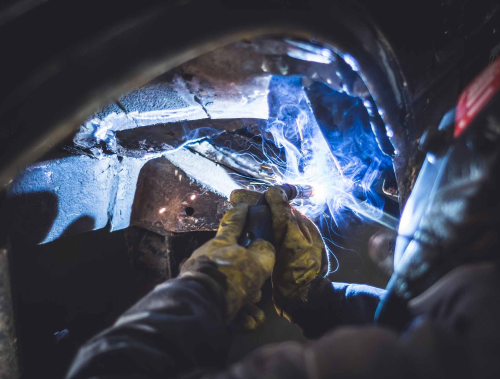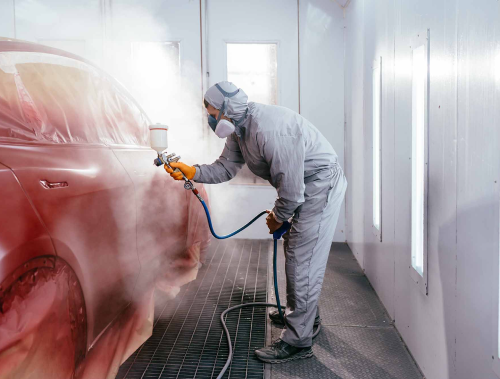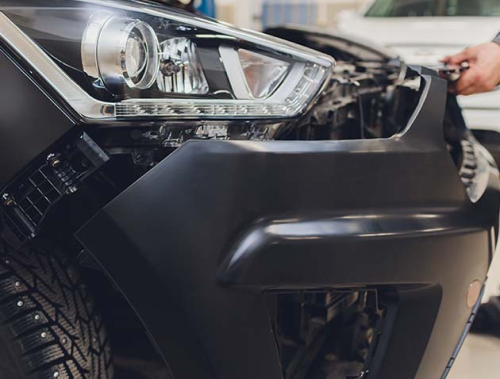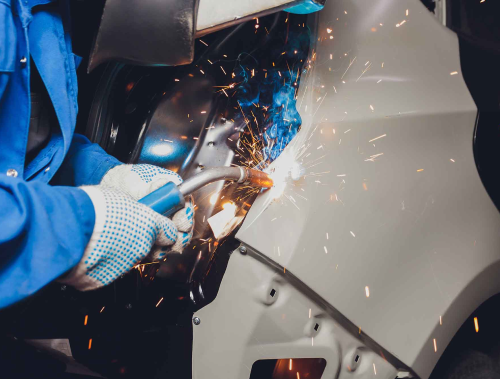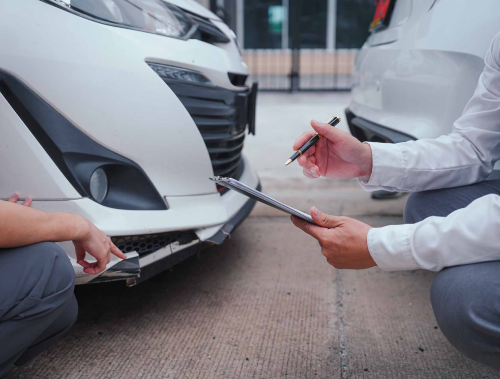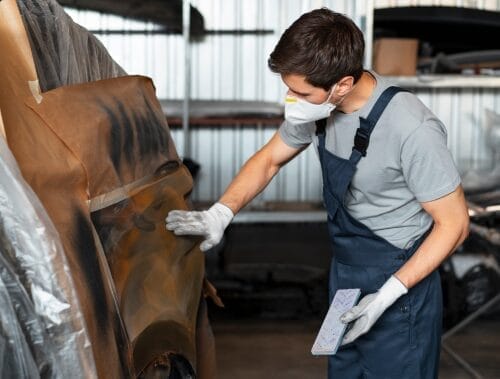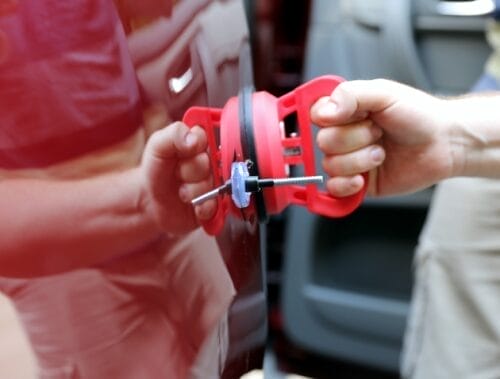When your vehicle suffers damage, whether from a minor fender bender or a more serious collision, understanding the repair process can be empowering. Knowing the techniques used in auto body repair not only helps you appreciate the skill involved but also allows you to make informed decisions about the best options for your car. This guide is designed to educate car owners and potential customers about the various techniques used in auto body repair, enhancing their understanding and awareness. Whether you’re curious about how a small dent can disappear or what happens when a bumper needs to be replaced, this overview will provide the clarity you need.
Paintless Dent Removal (PDR)
One of the most efficient and cost-effective methods in auto body repair is Paintless Dent Removal (PDR). This technique is particularly effective for minor dents and dings, such as those caused by hail or small parking lot mishaps. PDR is a specialized process that removes dents without disturbing the car’s original paint finish.
The PDR process involves carefully massaging the dent from the inside out using specialized tools. Technicians work slowly and precisely to push the metal back into its original shape. Since there’s no need for repainting, this method is faster and often less expensive than traditional dent repair.
Benefits of PDR
- Cost-Effectiveness: Without the need for paint or extensive labor, PDR is generally more affordable.
- Speed: Repairs can often be completed in a few hours, depending on the extent of the damage.
- Preservation of Original Paint: Maintaining the original factory paint ensures the vehicle’s value is retained, and there’s no risk of mismatched paint or overspray.
Body Filler Application
When dents or scratches are too severe for PDR, body filler becomes the go-to solution. This method is ideal for fixing surface imperfections that can’t be smoothed out with simple techniques.
The process begins by cleaning the damaged area and then applying the body filler, a type of putty-like substance, to fill in the dent or scratch. Once the filler is applied, it’s shaped and smoothed to match the contours of the vehicle’s body. After the filler has cured, it’s sanded down to create a smooth surface, ready for painting. The final step is applying a primer, followed by paint and a clear coat to match the surrounding area.
Bumper Repair and Replacement
Bumpers are often the first part of a vehicle to absorb impact during a collision, making them one of the most commonly damaged areas. Deciding whether to repair or replace a bumper depends on the extent of the damage.
When to Repair a Bumper
- Minor Scratches and Dents: These can often be smoothed out and repainted.
- Plastic Welding: If the bumper has cracks, plastic welding can fuse the material back together, maintaining structural integrity.
When to Replace a Bumper
- Severe Damage: If the bumper is severely cracked or missing large sections, replacement is usually necessary.
- Safety Concerns: A compromised bumper may not provide adequate protection in future collisions, making replacement the safer option.
Frame Straightening and Alignment
In more serious accidents, the vehicle’s frame might be bent or misaligned. Frame straightening is a critical process to restore the car’s structural integrity, ensuring it drives safely and handles correctly.
Technicians use specialized equipment, including hydraulic machines and laser-guided systems, to measure the frame’s alignment. By applying precise pressure, they can bend the frame back to its original specifications. This process is vital not just for the vehicle’s safety but also for ensuring that all other repairs, such as panel replacements or alignment, are performed correctly.
Auto Glass Repair and Replacement
Auto glass is a critical component of your vehicle’s safety and structural integrity. Whether it’s a small chip or a large crack, knowing when to repair or replace your auto glass can prevent further damage and ensure your vehicle remains safe to drive.
When to Repair Auto Glass
Small chips and cracks, typically less than the size of a quarter, can often be repaired rather than replaced. This is especially true if the damage is not directly in the driver’s line of sight. Repairing these minor issues quickly can prevent them from spreading, which could lead to a full glass replacement later on.
When to Replace Auto Glass
If a crack or chip is too large or in a critical area, such as directly in front of the driver, replacement is usually necessary. Additionally, if the damage compromises the structural integrity of the windshield, replacement is the safer option. Windshields are designed to provide up to 45% of the vehicle’s structural strength in a front-end collision, so maintaining their integrity is crucial.
Techniques for Repairing and Replacing Auto Glass
- Glass Repair with Resin: For small chips and cracks, a resin injection process is used. The resin is carefully injected into the damaged area, then cured and polished to restore the glass’s clarity and strength.
- Full Glass Replacement: When the damage is too extensive for repair, the entire windshield or window is removed and replaced with new glass. The area is carefully prepared to ensure a perfect fit, and the new glass is sealed and tested for leaks.
Car Painting and Refinishing
Repainting a vehicle is both an art and a science, requiring meticulous attention to detail to ensure a flawless finish that matches the car’s original color. Whether it’s a small touch-up or a complete repaint, understanding the process helps you appreciate the level of craftsmanship involved.
Steps Involved in Car Painting
- Surface Preparation: The first step is to clean and sand the surface to remove any existing paint or imperfections. This creates a smooth, even base for the new paint.
- Priming: A primer is applied to the prepared surface to help the new paint adhere better and provide an extra layer of protection against rust and corrosion.
- Painting: Multiple layers of paint are applied, allowing each coat to dry before adding the next. This builds up the color and ensures a durable finish.
- Clear Coat Application: Finally, a clear coat is applied to protect the paint and give it a glossy, polished appearance.
Importance of Accurate Color Matching
One of the most challenging aspects of car painting is ensuring that the new paint matches the original color. Modern techniques involve computerized color matching systems that scan the vehicle’s paint and mix a custom color formula. This ensures that the repair is seamless and the new paint blends perfectly with the existing finish, making the repair virtually invisible.
Panel Replacement
When a vehicle’s body panel is too damaged to repair, replacement becomes necessary. This could be due to severe dents, rust, or structural issues that compromise the panel’s integrity.
When to Replace Panels
- Severe Damage: Large dents, creases, or structural damage that cannot be adequately repaired require panel replacement.
- Rust and Corrosion: If rust has eaten through the metal, replacing the panel is often the only option to ensure the vehicle’s structural integrity.
Process of Panel Replacement
- Removing the Damaged Panel: The first step is to carefully remove the damaged panel, which may involve unbolting or cutting it away from the vehicle.
- Fitting the New Panel: The new panel is then aligned and fitted to ensure it matches the surrounding areas perfectly.
- Painting: Once the panel is securely in place, it is primed, painted, and clear-coated to match the rest of the vehicle.
Rust and Corrosion Repair
Rust is more than just an eyesore; it can significantly weaken your vehicle’s structure if not addressed promptly. Repairing rust and corrosion involves stopping the damage and preventing it from spreading.
Techniques for Rust and Corrosion Repair
- Sanding: The rusted area is sanded down to bare metal, removing all traces of corrosion.
- Rust Inhibitors: After sanding, a rust inhibitor is applied to prevent the rust from returning.
- Repainting: Finally, the area is primed, painted, and clear-coated to protect the metal and restore the vehicle’s appearance.
Final Inspection and Quality Control
After all repairs are completed, a thorough final inspection is essential to ensure that everything meets the highest quality standards. This step is crucial for both safety and customer satisfaction.
Steps in Final Inspection
- Alignment Checks: Ensure that all panels, doors, and other parts are properly aligned.
- Paint Quality: Inspect the paint job for consistency, color matching, and finish quality.
- Overall Fit and Finish: Check that all repairs blend seamlessly with the rest of the vehicle, with no visible gaps or imperfections.
Conclusion
Understanding these common auto body repair techniques can help you make more informed decisions when your vehicle needs repair. Whether it’s a simple glass repair or a complete panel replacement, each process is designed to restore your car to its original condition, both in appearance and structural integrity. For the best results, always consult with a professional auto body repair shop that can assess the damage and recommend the most appropriate techniques for your specific needs.

